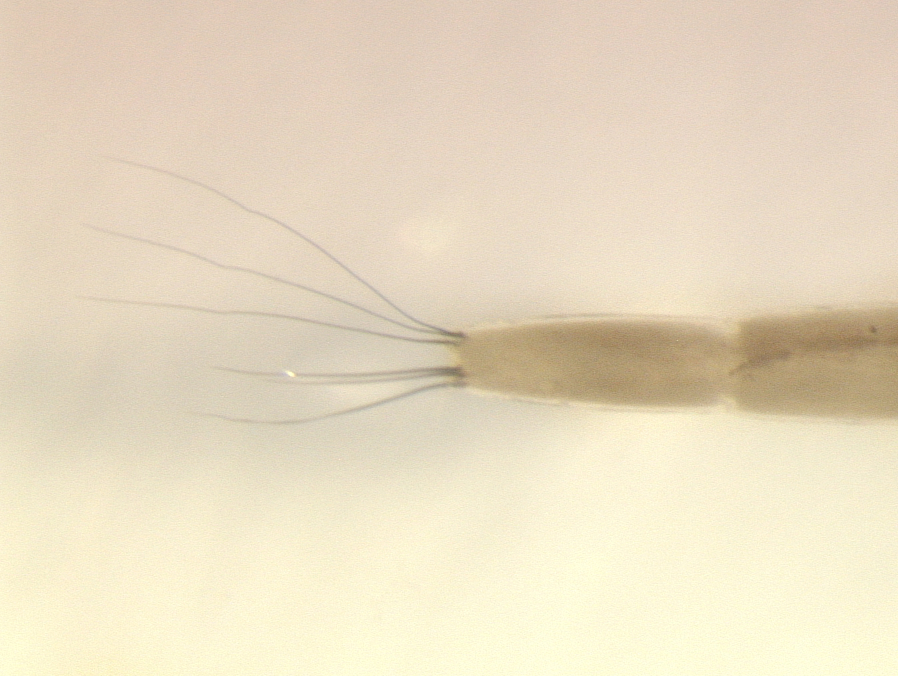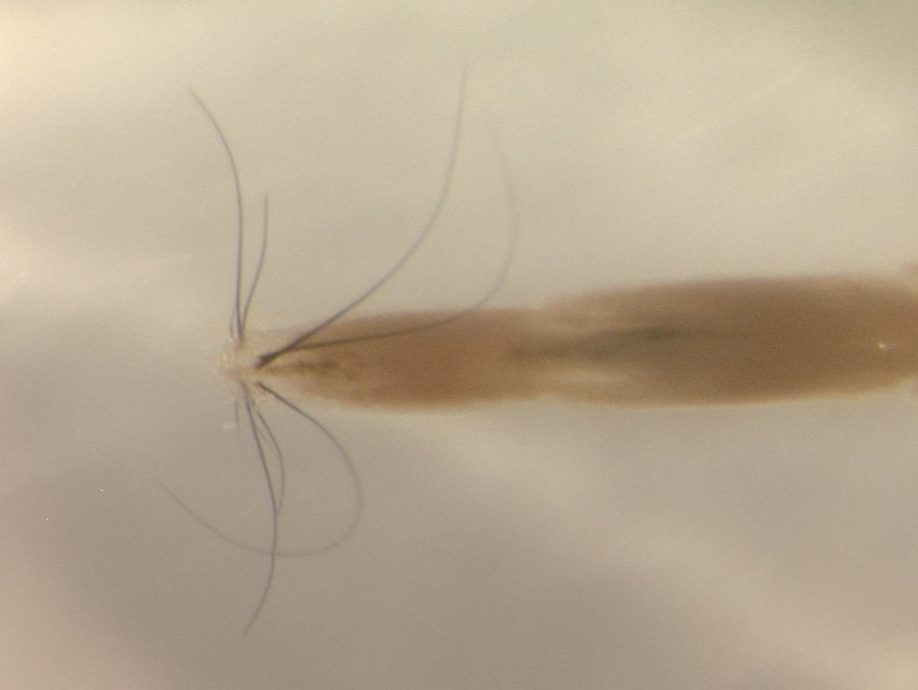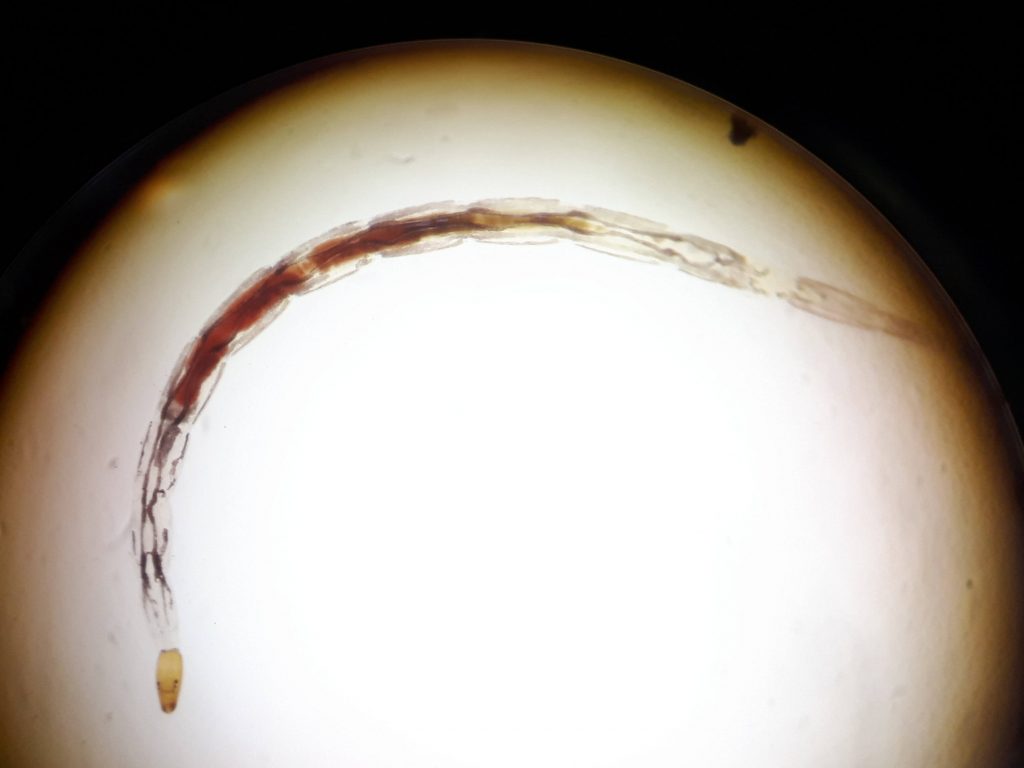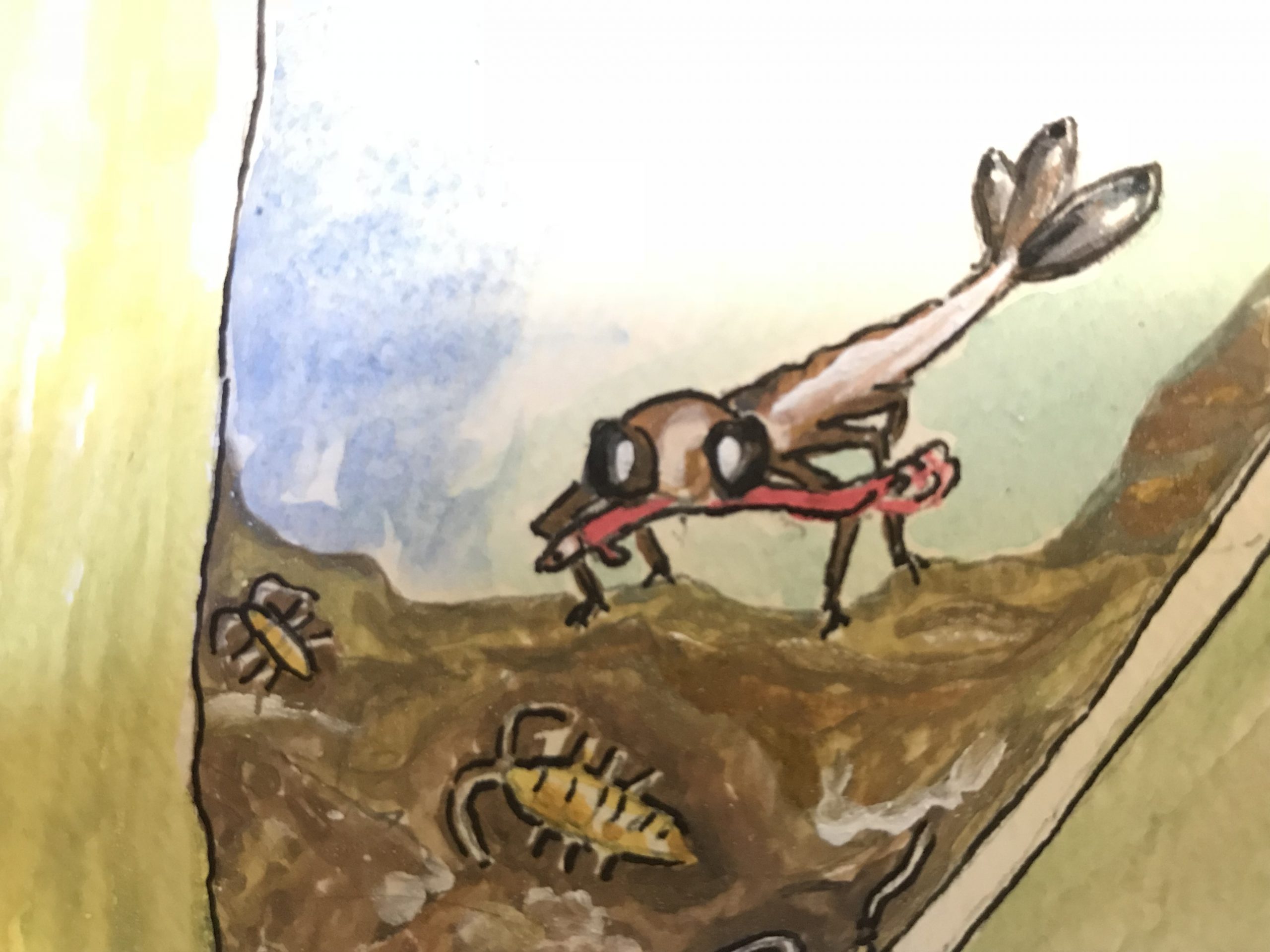Two cryptic species were identified with molecular information – five individuals sequenced. They have characteristic serpent-like movements and long anal setae.
Habitat: Aquatic.
Synonyms on the BWG database: Ceratopogonidae sp. B, Ceratopogonidae sp. D, Ceratopogonidae sp A.
Preserved specimens






Note: The disposition of setae (spread, closed, curled, straight) in Ceratopogoniinae is not a diagnostic character. It changes with the position in which the individual died or with manipulation.
Live individuals



Note: Inner color varies according to the color of food. Red on first photo was taken after eating a Polypedilum.
